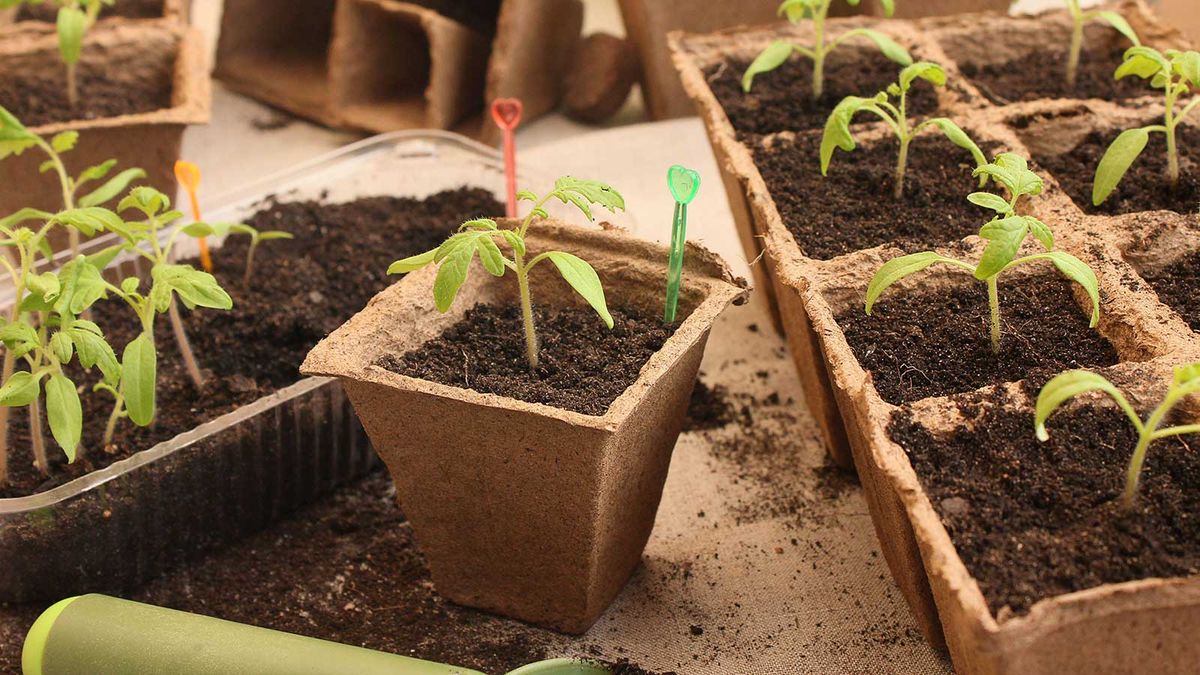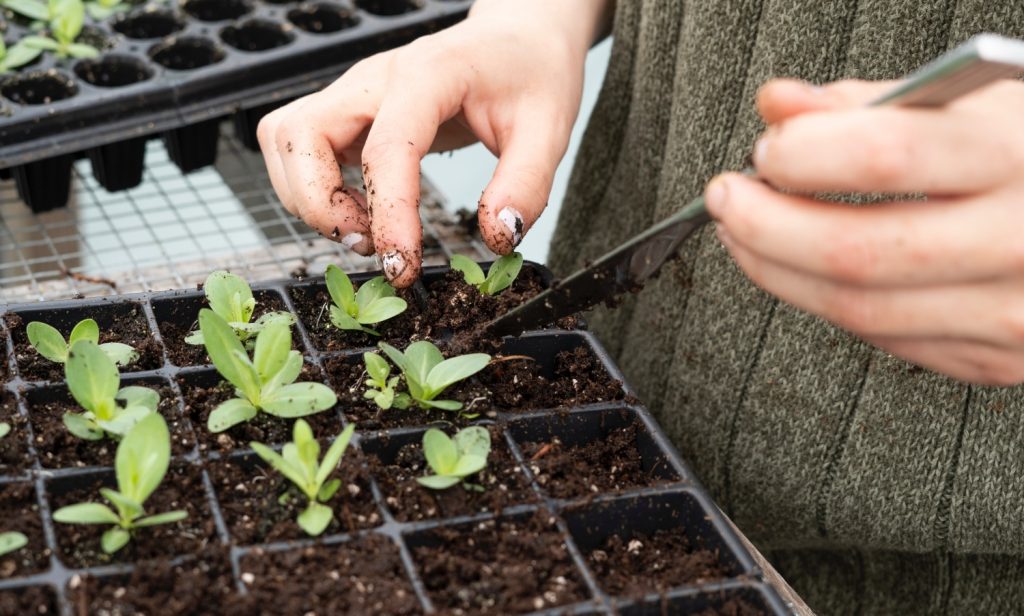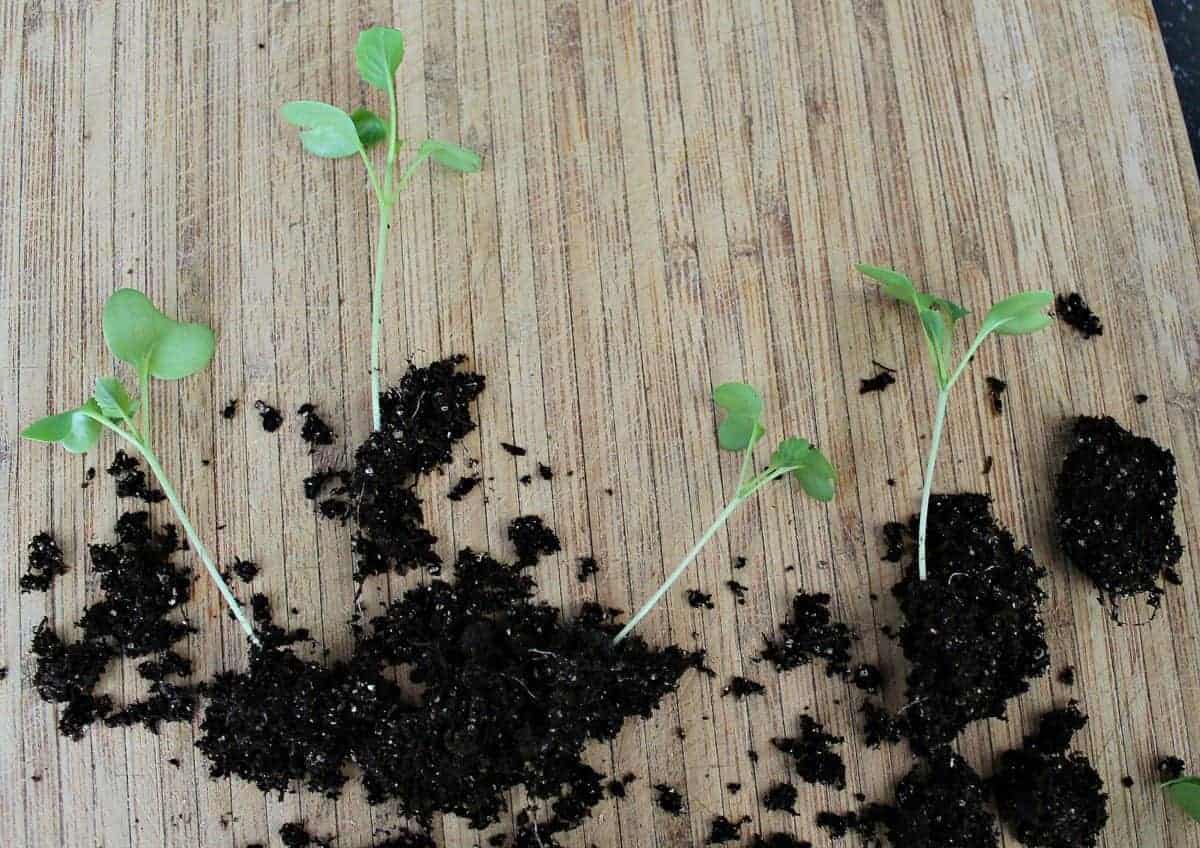Why Timing is Everything: Knowing When to Transplant Seedlings
Transplanting seedlings at the right time is crucial for their healthy growth and development. When seedlings outgrow their containers, they require more space to expand their roots and absorb essential nutrients. Failing to transplant them in a timely manner can lead to stunted growth, reduced yields, and increased susceptibility to diseases. On the other hand, transplanting too early can cause transplant shock, which can be detrimental to the seedlings’ health.
The ideal time to transplant seedlings depends on various factors, including the type of plant, its growth rate, and the climate. Generally, seedlings are ready to be transplanted when they have two to three sets of leaves and their roots have filled the container. However, some plants, such as tomatoes and peppers, may require more time to mature before being transplanted.
When to move seedlings to a bigger pot is a common question among gardeners. The answer lies in monitoring the seedlings’ growth and adjusting the transplanting schedule accordingly. By transplanting seedlings at the right time, gardeners can provide them with the necessary space to grow and thrive, ultimately leading to healthier and more productive plants.
Timing is critical when it comes to transplanting seedlings. Transplanting too early or too late can lead to a range of problems, including transplant shock, stunted growth, and reduced yields. By understanding the importance of timing and taking the necessary steps to ensure a smooth transition, gardeners can give their seedlings the best chance to grow and thrive.
Seedlings that are transplanted at the right time are more likely to establish a strong root system, which is essential for healthy growth and development. A well-established root system enables seedlings to absorb essential nutrients and water, leading to healthier and more productive plants.
In addition to timing, other factors such as soil quality, light, and temperature also play a crucial role in the success of transplanting seedlings. By providing seedlings with the right conditions, gardeners can ensure a smooth transition and give their seedlings the best chance to grow and thrive.
How to Determine if Your Seedlings Need a Bigger Pot
Seedlings that have outgrown their containers require more space to expand their roots and absorb essential nutrients. Knowing when to move seedlings to a bigger pot is crucial for their healthy growth and development. Here are some signs to check if your seedlings need a bigger pot:
Roots growing out of the drainage holes: If you notice roots growing out of the drainage holes, it’s a clear indication that the seedling has outgrown its container. This is because the roots have filled the container and need more space to expand.
Waterlogged soil: If the soil is consistently waterlogged, it may be a sign that the seedling needs a bigger pot. This is because the soil is not draining properly, and the seedling is not getting enough oxygen.
Slowed growth: If you notice that your seedling’s growth has slowed down, it may be a sign that it needs a bigger pot. This is because the seedling is not getting enough nutrients and space to grow.
To inspect your seedlings for these signs, gently remove the seedling from its container and examine the roots. If you notice any of the above signs, it’s time to transplant your seedling into a bigger pot.
When inspecting your seedlings, also check for any signs of nutrient deficiency or pests. This will help you identify any potential problems and take corrective action before transplanting.
By regularly inspecting your seedlings and checking for signs of growth, you can determine when to move seedlings to a bigger pot and provide them with the necessary space to grow and thrive.
Choosing the Right Pot: Factors to Consider for Healthy Growth
When it comes to transplanting seedlings, choosing the right pot is crucial for their healthy growth and development. The pot should provide enough space for the roots to grow, while also ensuring that the soil drains properly and the seedling receives adequate light and nutrients.
Material: The material of the pot can affect the health and growth of the seedling. For example, plastic pots can retain heat and moisture, while clay pots can dry out quickly. Consider using pots made from breathable materials, such as terracotta or ceramic, which allow for better air circulation and moisture regulation.
Size: The size of the pot is also important. A pot that is too small can cause the roots to become root-bound, while a pot that is too large can cause the soil to become waterlogged. Choose a pot that is only slightly larger than the current one, to give the roots enough space to grow without becoming too wet.
Drainage: Proper drainage is essential for healthy growth. Make sure the pot has drainage holes in the bottom to prevent waterlogged soil. You can also add a layer of broken pottery or small rocks at the bottom of the pot to improve drainage.
Depth: The depth of the pot is also important. Seedlings need enough room to grow their roots, but not so much that the soil becomes too deep. A general rule of thumb is to choose a pot that is at least 6-8 inches deep, to give the roots enough room to grow.
When choosing a pot, also consider the type of plant you are growing. Different plants have different needs, and some may require more space or specific growing conditions. By choosing the right pot, you can provide your seedlings with the best chance to grow and thrive.
Remember, when to move seedlings to a bigger pot is not just about the size of the pot, but also about the quality of the pot. By choosing a pot that meets the needs of your seedlings, you can ensure healthy growth and development.
The Best Time to Transplant Seedlings: A General Guide
When it comes to transplanting seedlings, timing is everything. The best time to transplant seedlings depends on various factors, including the optimal time of day, weather conditions, and season. By understanding these factors, you can determine when to move seedlings to a bigger pot and give them the best chance to grow and thrive.
Optimal Time of Day: The best time to transplant seedlings is during the cooler part of the day, such as early morning or late afternoon. This allows the seedlings to adjust to their new environment without being exposed to extreme temperatures.
Weather Conditions: Weather conditions also play a crucial role in determining the best time to transplant seedlings. Avoid transplanting during extreme weather conditions, such as heavy rain, intense sunlight, or strong winds. Instead, choose a day with mild weather and minimal wind.
Season: The season also affects the best time to transplant seedlings. In general, spring and fall are the best seasons to transplant seedlings, as the weather is mild and there is ample moisture in the soil. Avoid transplanting during the hottest summer months or the coldest winter months, as this can cause stress to the seedlings.
Additional Factors: Other factors to consider when determining the best time to transplant seedlings include the type of plant, its growth rate, and the climate. For example, some plants may require more time to mature before being transplanted, while others may be ready to transplant sooner.
By considering these factors, you can determine the best time to transplant seedlings and give them the best chance to grow and thrive. Remember, when to move seedlings to a bigger pot is not just about the size of the pot, but also about the timing of the transplant.
By transplanting seedlings at the right time, you can minimize transplant shock and ensure a smooth transition to their new environment. This will give your seedlings the best chance to grow and thrive, and ultimately lead to a successful harvest.
Avoiding Transplant Shock: Tips for a Smooth Transition
Transplant shock is a common problem that can occur when seedlings are moved to a new pot. This can cause the seedlings to become stressed, leading to a range of problems, including wilted leaves, reduced growth, and increased susceptibility to disease. However, by following a few simple tips, you can minimize transplant shock and ensure a smooth transition for your seedlings.
Handle Roots with Care: When transplanting seedlings, it’s essential to handle the roots with care. Avoid touching or handling the roots excessively, as this can cause damage and lead to transplant shock. Instead, gently remove the seedling from its pot and place it in the new pot, taking care not to disturb the roots.
Water Seedlings Properly: Watering is critical when transplanting seedlings. Make sure to water the seedlings thoroughly before and after transplanting, and avoid getting water on the leaves or crown of the plant. This can help reduce stress and prevent transplant shock.
Provide Adequate Light and Nutrients: Light and nutrients are essential for healthy growth, and providing adequate amounts can help minimize transplant shock. Make sure to place the seedlings in a location with bright, indirect light, and provide a balanced fertilizer to promote healthy growth.
Monitor Seedlings After Transplant: After transplanting, it’s essential to monitor the seedlings closely for signs of stress or disease. Check the seedlings daily for signs of wilted leaves, yellowing, or other problems, and take action promptly if you notice any issues.
By following these tips, you can minimize transplant shock and ensure a smooth transition for your seedlings. Remember, when to move seedlings to a bigger pot is not just about the size of the pot, but also about the timing and care of the transplant.
By providing the right care and attention, you can help your seedlings thrive and grow into healthy, productive plants. Whether you’re a seasoned gardener or just starting out, understanding how to avoid transplant shock is essential for achieving success in your gardening endeavors.
Common Mistakes to Avoid When Transplanting Seedlings
Transplanting seedlings can be a delicate process, and making mistakes can lead to poor growth, disease, or even death. By understanding the common mistakes to avoid, you can ensure a successful transplant and give your seedlings the best chance to grow and thrive.
Over-handling Roots: One of the most common mistakes to avoid when transplanting seedlings is over-handling the roots. This can cause damage to the roots, leading to transplant shock and poor growth. Instead, gently remove the seedling from its pot and handle the roots as little as possible.
Under-watering: Under-watering is another common mistake to avoid when transplanting seedlings. This can cause the seedlings to become stressed, leading to poor growth and increased susceptibility to disease. Make sure to water the seedlings thoroughly before and after transplanting, and avoid getting water on the leaves or crown of the plant.
Exposing Seedlings to Extreme Temperatures: Exposing seedlings to extreme temperatures can also be detrimental to their health. Avoid transplanting seedlings in direct sunlight, especially during the hottest part of the day, and avoid exposing them to frost or freezing temperatures.
Not Monitoring Seedlings After Transplant: Finally, not monitoring seedlings after transplant is a common mistake to avoid. This can lead to undetected problems, such as transplant shock, disease, or pests. Make sure to monitor the seedlings closely after transplant, and take action promptly if you notice any issues.
By avoiding these common mistakes, you can ensure a successful transplant and give your seedlings the best chance to grow and thrive. Remember, when to move seedlings to a bigger pot is not just about the size of the pot, but also about the care and attention given to the seedlings during and after transplant.
By taking the time to understand the common mistakes to avoid, you can become a more successful gardener and enjoy the rewards of growing healthy, thriving plants.
Post-Transplant Care: How to Help Your Seedlings Thrive
After transplanting your seedlings, it’s essential to provide them with the right care to help them thrive. This includes watering, fertilizing, and pruning, as well as monitoring them for signs of stress or disease.
Watering: Watering is critical after transplanting, as it helps to settle the soil and provide the seedlings with the moisture they need to grow. Make sure to water your seedlings thoroughly, but avoid overwatering, which can lead to root rot and other problems.
Fertilizing: Fertilizing your seedlings after transplanting can help to promote healthy growth and development. Use a balanced fertilizer that is specifically designed for seedlings, and follow the instructions on the label for application rates and timing.
Pruning: Pruning your seedlings after transplanting can help to promote healthy growth and development, as well as encourage bushy growth and prevent legginess. Use clean, sharp tools to prune your seedlings, and make sure to remove any dead or damaged leaves or stems.
Monitoring: Monitoring your seedlings after transplanting is essential to ensure they are healthy and thriving. Check them regularly for signs of stress or disease, such as yellowing leaves, black spots, or white powdery patches. Take action promptly if you notice any problems, and make sure to provide your seedlings with the right care to help them recover.
By providing your seedlings with the right care after transplanting, you can help them thrive and grow into healthy, productive plants. Remember, when to move seedlings to a bigger pot is not just about the size of the pot, but also about the care and attention given to the seedlings during and after transplant.
By following these tips, you can help your seedlings thrive and grow into healthy, productive plants. Whether you’re a seasoned gardener or just starting out, understanding how to care for your seedlings after transplant is essential for achieving success in your gardening endeavors.
Conclusion: Giving Your Seedlings the Best Chance to Grow
Transplanting seedlings is a crucial step in their growth and development. By understanding when to move seedlings to a bigger pot, you can provide them with the space they need to grow and thrive. Remember, timing is everything when it comes to transplanting seedlings, and making the right decisions can make all the difference in their success.
In this article, we’ve covered the importance of transplanting seedlings at the right time, how to determine if your seedlings need a bigger pot, and how to choose the right pot for healthy growth. We’ve also discussed the best time to transplant seedlings, how to avoid transplant shock, and common mistakes to avoid when transplanting seedlings.
By following these tips and guidelines, you can give your seedlings the best chance to grow and thrive. Remember to monitor your seedlings closely after transplanting, and adjust their care accordingly. With the right care and attention, your seedlings will be well on their way to becoming healthy, productive plants.
Final Checklist for Successful Transplanting:
- Transplant seedlings at the right time, taking into account the optimal time of day, weather conditions, and season.
- Choose the right pot for healthy growth, considering factors such as material, size, drainage, and depth.
- Handle roots with care, avoiding over-handling and damage.
- Water seedlings properly, avoiding overwatering and underwatering.
- Provide adequate light and nutrients, and monitor seedlings for signs of stress or disease.
By following these tips and guidelines, you can ensure a successful transplant and give your seedlings the best chance to grow and thrive.







